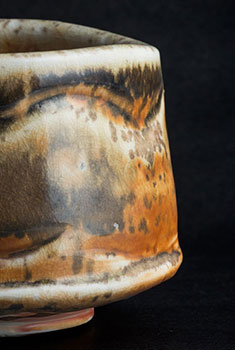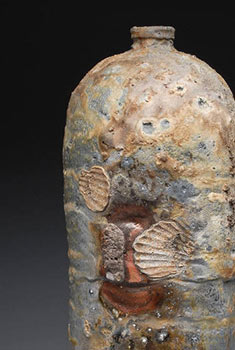- Ceramics
- Artist Pages
- Asian Ceramics & Tea
- Ceramics Artist Links
- Ceramics Links
- Ceramics Terms Glossary
- Agateware
- Banding Wheel
- Bat, Throwing Bat
- Bisqueware, Biscuit Ware
- Blistering
- Blow Up
- Boat Anchor
- Calipers
- Carbon Coring, Black Coring
- Carbon Trap
- Chuck, Chum
- Coil
- Colorants
- Crazing
- Downdraft Kiln
- EPK, Edgar Plastic Kaolin
- Electric Kiln
- Extrusion, Extruder
- Fettle, Fettling Knife
- Force Dry
- Greenware
- Kaolinite
- Kilnsitter
- Overglaze
- Pinholing
- Plucking
- Pug Mill
- Pyrometric Cones
- Raku
- Rib
- Sgraffito
- Shelf Of Shame
- Slab Roller
- Slip
- Test Tile
- Knowledge
- Frequently Ignored Answers
- Photography
- Photographers
- Photo Links
- Raw File Converters
- Camera Simulators
- Color Vision Games
- Frequently Ignored Answers
- Resources
- Contact
Bat, Throwing Bat

A slab of plaster or fired clay used for drying out clay or as a platform for work in clay.
Throwing bats are disks of wood, plaster or plastic that are held on the wheel head by a pair of pins or suction. Work thrown on bats can quickly be removed from the wheel by lifting off the bat, without damaging the work, allowing the potter to work on multiple objects in rapid succession.
All types of throwing bats have their advantages and disadvantages: wooden ones can be made cheaply but warp; plaster bats allow clay to self-release from them, but are less durable; and even plastic bats, though pretty tough, will blister and warp when bonehead students fry them with a heat gun, trying to dry out their work so they can trim it.
If the pinholes in a throwing bat become worn and larger than the pins attaching them to the wheel head, the bats can rattle around and even fly off at inopportune times. You can buy bat grippers to help hold them in place, or smear some mud/slip on the wheel head to help glue them down - or throw a thin pad of clay on the wheelhead to stick the bat to, and not have to worry about pins at all.
Trimming bats have a thin layer of foam or neoprene or other soft, tacky material that helps hold a piece in place when trimming, eliminating the need to use wads of clay to hold the piece in place, and allowing the piece to be trimmed all the way down to the bat.
Putting bats away dirty, especially if they still have a round of clay on them from the bottom of a piece you just wired off? Not a way to look cool. People may call you a ceramics scumbag.




